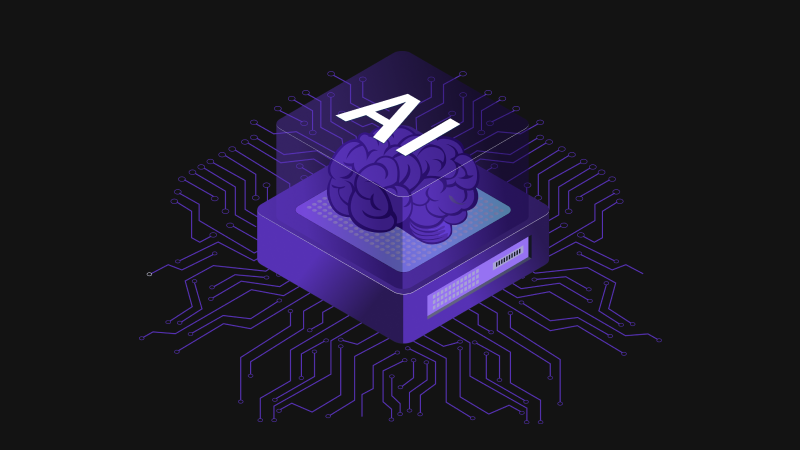In 2023, generative AI was all the rage, but now, every enterprise leader today is talking about agentic AI: systems that don’t just generate answers, but act on them. From automating customer workflows to streamlining operations and managing complex tasks, this next generation of AI has plenty of potential, and tech leaders across industries are buzzing.
But there’s a catch.
Agentic AI can only succeed if it fits into your organization’s existing security and compliance architecture without introducing new risks or breaking the controls you already rely on.
In this post, we’ll explore:
- What agentic AI actually means in the enterprise context
- Why trust is the single biggest barrier to adoption
- The hidden security gap that most organizations overlook
- What it takes to build a trustworthy foundation for agentic AI
- How to assess whether your current security posture is ready
Read on for a clear view of what’s holding enterprises back, and what a “trust-first” approach looks like in practice.
What Exactly Is Agentic AI?
If traditional AI is reactive, then agentic AI is proactive. Rather than simply responding to prompts, agentic AI can plan, reason, and execute on behalf of the user, such as coordinating multiple tools, handling complex decision trees, or triggering actions across business systems.
For the enterprise, this means agentic AI could:
- Automate business processes from start to finish, not just individual steps.
- Help employees make informed decisions with specific contexts.
- Continuously learn from previous outcomes to improve future performance.
With this backdrop, it’s easy to see the attraction of agentic AI. It promises to multiply human productivity and enable organizations to act faster than ever before.
The caveat is that this power comes with inherent risk. When AI begins to make decisions and access systems on its own, traditional perimeter-based security models become insufficient.
The Hidden Trust Gap Stalling Enterprise AI Adoption
Enterprises aren’t hesitating on agentic AI because they lack innovation. They’re hesitating because there’s a lack of security proof.
One of the main reasons AI pilots stall before production isn’t a technical limitation; it’s a gap in trust. CIOs, CISOs and compliance leaders need verifiable confidence that agentic AI won’t expose sensitive data, tamper with models or violate regulatory boundaries.
There are three main things behind this gap:
1. Invisible runtime behavior. Agentic AI systems act dynamically, meaning they could touch sensitive data or interact with applications in ways that weren’t explicitly programmed. Without runtime visibility or attestation, those actions are effectively a black box.
2. Fragmented governance and audit trails. Even when logs exist, they’re often spread across multiple systems. Without a single source of truth, it’s difficult to prove compliance or reconstruct incidents when something goes wrong.
3. Data and model exposure. Models trained on proprietary or regulated data can leak insights if they’re not properly protected during use. A model that runs outside a trusted environment can expose intellectual property, trade secrets or personal data.
This lack of continuous verification is the hidden gap that keeps enterprise AI stuck in pilot mode. Until you can prove trust at runtime, you can’t safely scale.
Why Confidential Computing is the Way to Truly Secure Data and AI
Confidential Computing is a technology where workloads remain encrypted even while in use. It allows models to run within secure enclaves, shielding data and computations from outside observation, including cloud administrators or insider threats.
Many enterprise security frameworks assume that trust exists once systems are deployed. But with AI, that’s not enough. Organizations need continuous, auditable proof that their compute environment (CPU, GPU and memory) is verified and uncompromised before any keys or data are released.
The beauty of Confidential Computing is that it protects sensitive data from cloud providers, system administrators and malware by making the data and code inaccessible to anyone outside of its secure enclave. This is crucial for AI, as it allows teams to train and run models on sensitive data without the risk of exposing it.
With the zero-trust mindset that has become the norm, teams need to take a few more steps before they truly unleash AI innovation.
Agentic AI Needs a Foundation of Trust
Agentic AI doesn’t just use data; it acts on it. For this reason, it demands a higher standard of assurance than traditional AI. Trust needs to be built in from the start rather than patched on later.
Here’s what that should look like in practice:
- Composite Attestation: Every component in the AI environment, including CPUs and GPUs, must prove its authenticity and integrity. Composite attestation links these pieces together into a unified chain of trust. It’s how you ensure that the environment running your models hasn’t been compromised.
- Attestation-Gated Key Release: Encryption keys, model weights, and datasets should never be released to an unverified system. Attestation-gated key release means that sensitive assets are only accessible once the hardware and software stack have been validated and meet policy requirements.
- Immutable Logs and Unified Governance: Every interaction, model update, and key release should be automatically logged in a tamper-proof ledger. Unified audit trails make it possible to demonstrate compliance and perform root-cause analysis if (and when) something goes wrong.
- Policy Enforcement and Role-Based Controls: To prevent privilege creep, agentic systems must adhere to fine-grained policies that define who (or what) can perform which actions, as well as under specific conditions. Separation of duties, quorum approvals, and real-time monitoring are essential.
These are the ingredients of an AI environment built for trust by design, not trust by assumption.
Can Your Current Data Security Strategy Keep Up with Agentic AI?
Now comes the hard question: Does your current enterprise security strategy support agentic AI? Or does it fight against it?
Most existing security architectures were built for static systems, not autonomous agents. Here’s where organizations typically hit friction:
- Key management systems that aren’t built for non-human identities or automated workflows
- IAM and governance tools that can’t model or control AI agents as first-class entities
- Hand-stitched stacks of tools and services with no unified policy enforcement
These issues don’t just slow down adoption; they introduce real risk that could prove damaging to business operations, your reputation with customers, or even the bottom line. Without the ability to verify environments, enforce policies, and maintain control over sensitive assets, enterprises are left relying on blind trust.
A more resilient approach starts with an honest assessment. When you’re getting started, the questions you should ask yourself include:
- Can my systems verify hardware integrity before releasing encryption keys?
- Do our policies apply consistently across all components and not just at the API layer?
- Are AI actions logged, immutable and traceable across the full lifecycle?
If the answer to any of these is “not yet,” you’re not alone. Most enterprises are still looking for ways to bridge this gap.
How Enterprises Can Evolve Their AI Security Posture
The good thing is, you don’t have to rebuild everything overnight to successfully secure agentic AI workflows. The smartest approach is to evolve your security architecture alongside your AI strategy.
Here’s how leading organizations are doing it:
- Start small but start right. Focus on initial deployments of non-sensitive data while you test governance frameworks.
- Adopt confidential computing incrementally. Start with CPUs, then expand to GPUs that support secure enclaves. To operate with maximum security, you also need to have verifiable composite attestation before you proceed with data and AI processing.
- Modernize key management. This includes enabling attestation-based access control.
- Unify logging across AI pipelines. The goal is to achieve full visibility and traceability.
- Codify AI policies early. Define what agents can access, modify or automate.
- Integrate with existing SIEM and compliance systems. You want to ensure that AI activity becomes part of your broader governance picture.
- Engage third-party audits. The idea is to gain independent proof of trustworthiness.
These steps will help you move from AI experiments to trusted, production-ready deployments that don’t compromise security or compliance.
Building the Trust Layer for Agentic AI
While agentic AI represents a turning point for enterprise innovation, the same could be said for enterprise risk. Success won’t depend on who adopts it first, but who adopts it safely.
Enterprises that can demonstrate verifiable trust across data, models, and infrastructure will be able to scale faster, meet regulatory expectations, and innovate with confidence. On the flip side, those who can’t stay stuck in proof-of-concept limbo.
If you’re exploring how to align your AI ambitions with your security and compliance strategy, now is the time to act.
Want to see what trusted agentic AI looks like in practice? Contact us to learn how Fortanix helps enterprises unlock innovation with a secure, on-premises AI foundation, built for trust from the ground up.











